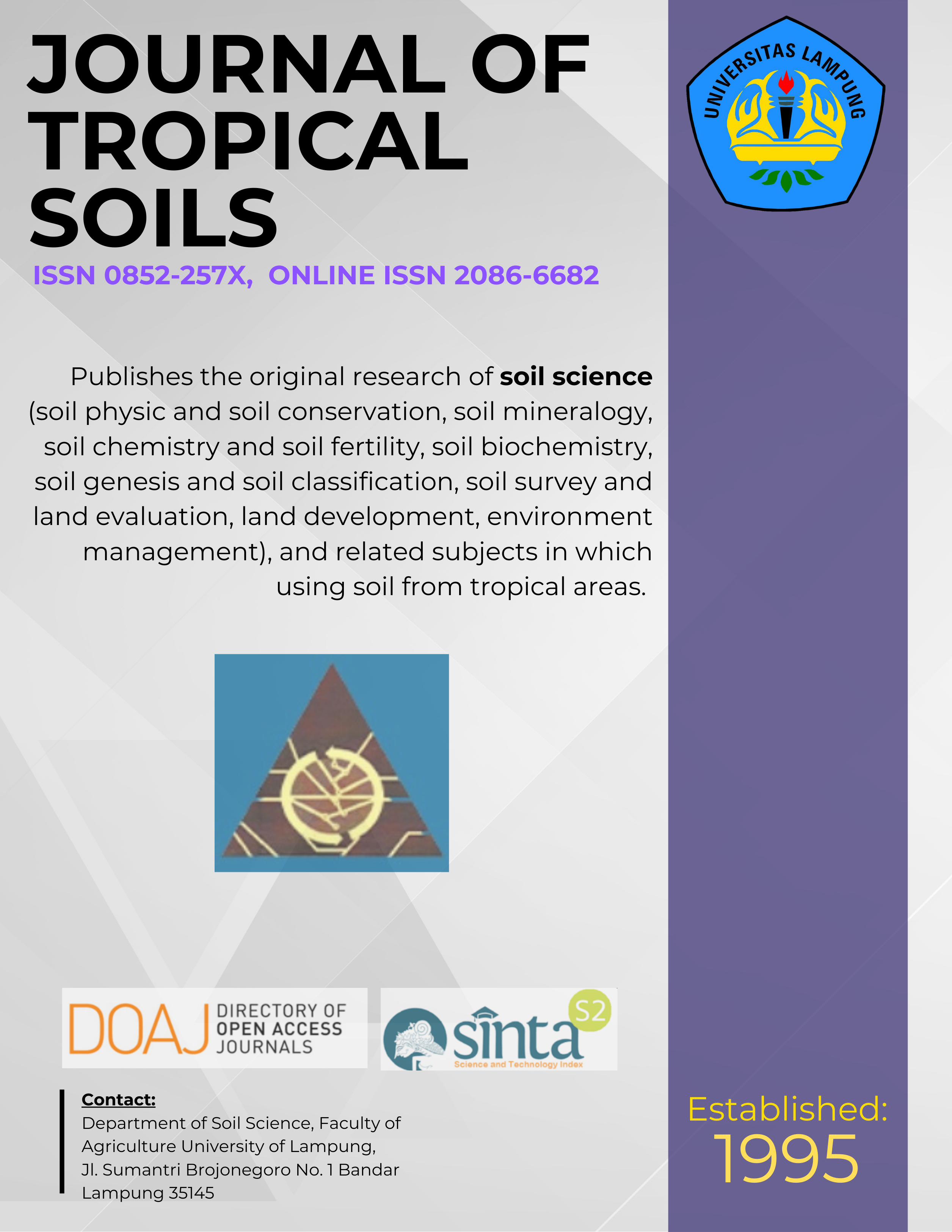Assessing Biodegradation Susceptibilities of Selected Petroleum Hydrocarbons at Contaminated Soils
Main Article Content
Abstract
Assessing Biodegradation Susceptibilities of Selected Petroleum Hydrocarbons at Contaminated Soils (M.H. Langsa): The susceptibility to biodegradation of selected saturated hydrocarbons (SHCs), polycyclic aromatic hydrocarbons (PAHs) and asphaltenes in a Barrow crude oil and extracts isolated from soils contaminated with the Barrow crude oil at day 0 and 39 was determined. Soil samples were contaminated with a Barrow crude oil across the surface (5% w/w) as part of a mesocosm experiment in order to mimic similar conditions in the environment. Â The extent of biodegradation of the Barrow oil extracted from the contaminated soils at day 0 and day 39 was assessed by GC-MS analyses of SHCs and PAHs fractions. Changes in the relative abundances of n-alkanes (loss of low-molecular-weight hydrocarbons) and pristane relative to phytane (Pr/Ph) and their diastereoisomers were determined. Changes in the diastereo-isomer ratios of Pr and Ph relate to the decrease in abundance of the phytol-derived 6(R),10(S) isoprenoids with increasing biodegradation. The percentage change in abundances of each of selected alkylnaphathalenes with time (day 0 to 39) was determined, enabling an order of susceptibility of their isomers to biodegradation. It was established that the 2-methylnaphthalene isomers (2-MN) is more susceptible to microbial attack than 1-MN isomer indicated by decreasing in percent abundance from day 0 to 39 for the 2-MN isomer. The GC-MS analyses of the original Barrow oil indicated the oil had not undergone biodegradation. When this oil was used in the soil mesocosm experiments the oil was shown to biodegrade to about a level 2 -3 based on the biodegradation susceptibility of the various SHCs and PAHs described above.
Downloads
Article Details
Section
License for Authors
Authors who publish with this journal agree to the following terms:
- Authors retain copyright and grant the journal right of first publication with the work simultaneously licensed under a Creative Commons Attribution License that allows others to share the work with an acknowledgement of the work's authorship and initial publication in this journal.
- Authors are able to enter into separate, additional contractual arrangements for the non-exclusive distribution of the journal's published version of the work (e.g., post it to an institutional repository or publish it in a book), with an acknowledgement of its initial publication in this journal.
- Authors are permitted and encouraged to post their work online (e.g., in institutional repositories or on their website) prior to and during the submission process, as it can lead to productive exchanges, as well as earlier and greater citation of published work (See The Effect of Open Access).
License for Regular Users
Other regular users who want to cite, distribute, remix, tweak, and build upon author’s works, even for commercial purposes, should acknowledge the work’s authorship and initial publication in this journal, licensed under a Creative Commons Attribution License.

